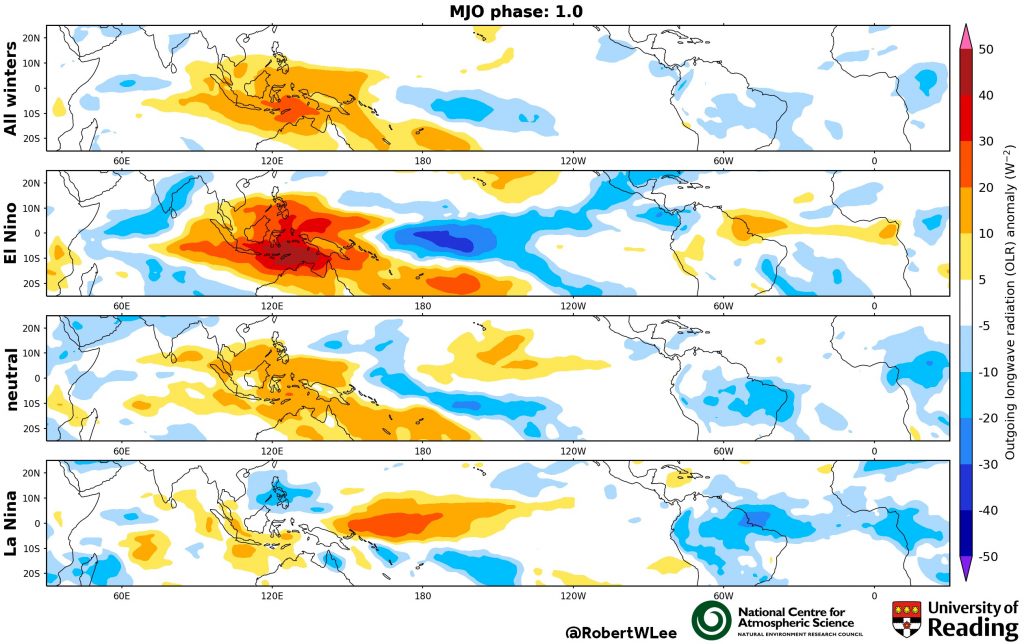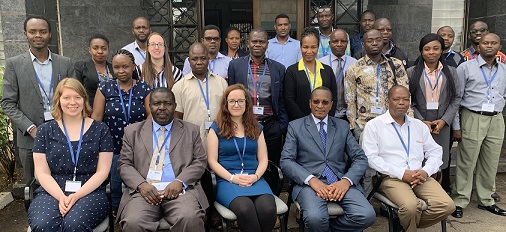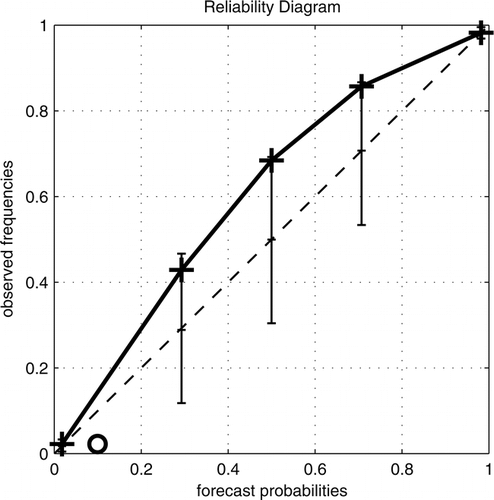2019 was a year of extremes for East Africa. The long rains (March-May) started late and low rainfall during the season exacerbated the drought conditions following the dry short rains (October-December) in 2018. Conversely, the short rains in 2019 were extremely wet, with reports of floods and landslides from across the region, and over 2.8 million affected by the heavy rainfall.
High dependence upon climate for subsistence means that East Africa is particularly vulnerable to climate extremes and climate variability. Recently, the HyCRISTAL project has been working to develop new understanding of East African climate variability and change and its impacts, and working with regional decision makers to support the use of climate information in long-term decision making in the region.
Since the mid-1980s rainfall during the long rains (the dominant of the two East African wet seasons) has declined, bringing major socio-economic consequences. However, future climate projections from climate models show long rains rainfall increasing in the future. This inconsistency has been termed the “East Africa Climate Change Paradox” and has limited the use of climate change projections in decision making in the region. In our recent study, completed as part of the HyCRISTAL project, we examine the causes and implications of this apparent paradox.

Figure 1: a) Long Rains rainfall anomaly over Eastern Africa 1985–2018 from 3 satellite-based rainfall products (CHIRPS, TAMSAT and GPCP). The bars represent the anomaly for each year (CHIRPS); the lines are smoothed using a 3 year moving average. b) Mean seasonal cycle over Eastern Africa from CHIRPS over the 3 periods of study. The schematic on the right shows the position of the stronger Arabian Heat Low and stronger Somali.
Analysis of satellite-based rainfall datasets shows that the decline in rainfall during the long rains was associated with a later start to the season (later onset) and earlier end of the season (earlier cessation, Figure 1). We found that since the late 2000s there has been some recovery of the long rains, although with high year to year variability.
Concurrently with the rainfall decline over Eastern Africa is a decrease in the surface pressure over Arabia in May. This indicates a strengthening of the Arabian Heat Low. We previously discovered a similar strengthening of the Sahara Heat Low was linked with later wet seasons over West Africa (Dunning et al., 2018). The Arabian Heat Low is a dominant feature over the Arabian Peninsula in spring and summer, that interacts with local weather phenomena including the Somali Jet and the Indian Monsoon. The southerly winds, forming part of the Somali Jet, are also found to strengthen in May. Furthermore, over the period of the decline, May sea surface temperatures increased more over the very north Arabian Sea than further south in the Indian Ocean.
The increase in wind speed, strengthening of the Arabian Heat Low (Figure 1), and change in sea surface temperature gradient across the Arabian Sea act to draw the rain-band northwards faster and further, away from Eastern Africa, consistent with the decline in rainfall and earlier end to the long rains.
Considering the later onset, warming sea surface temperatures south of Madagascar are associated with reduced March rainfall and later onsets, as warmer temperatures to the south delay the northward progression of the rain-band.
The next challenge is to identify the role of natural variability and the role of anthropogenic carbon emissions on this mechanism, to ascertain whether the recent decline is part of natural variability or part of a climate change signal. Other studies have linked natural variability in Indian Ocean sea surface temperatures with multi-decadal climate variability over East Africa (Tierney et al., 2013). Understanding the response of the mechanism identified here to rising greenhouse gas concentrations will contribute more information on the current uncertain future rainfall changes over East Africa.
Read more and download the paper “‘Eastern African Paradox’ rainfall decline due to shorter not less intense Long Rains” here.
The key findings from the HyCristal project (so far!) on climate change are summarised here.
References:
Dunning, C.M., Black, E. and Allan, R.P. (2018) Later Wet Seasons with More Intense Rainfall over Africa under Future Climate Change, Journal of Climate, 31, 9719–9738, doi: https://doi.org/10.1175/JCLI-D-18-0102.1
Finney, D., Marsham, J., Rowell, D., Way, C., Evans, B., Cornforth, R., … & Anyah, R. (2019). Scientific Understanding of East African climate change from the HyCRISTAL project., https://doi.org/10.5518/100/19
Tierney, J., Smerdon, J., Anchukaitis, K. et al. (2013). Multidecadal variability in East African hydroclimate controlled by the Indian Ocean. Nature 493, 389–392 https://doi.org/10.1038/nature11785
Wainwright, C. M., Marsham, J. H., Keane, R. J., Rowell, D. P., Finney, D. L., Black, E., & Allan, R. P. (2019). ‘Eastern African Paradox’ rainfall decline due to shorter not less intense Long Rains. npj Climate and Atmospheric Science, 2, 34 https://doi.org/10.1038/s41612-019-0091-7
Online material:
Laura Harrison, Juliet Way-Henthorne, and Chris Funk (2019) Climate Hazards Center Early Estimates and the East Africa March-to-May 2019 Drought,
OCHA, EASTERN AFRICA REGION Regional Floods Snapshot (2019)























